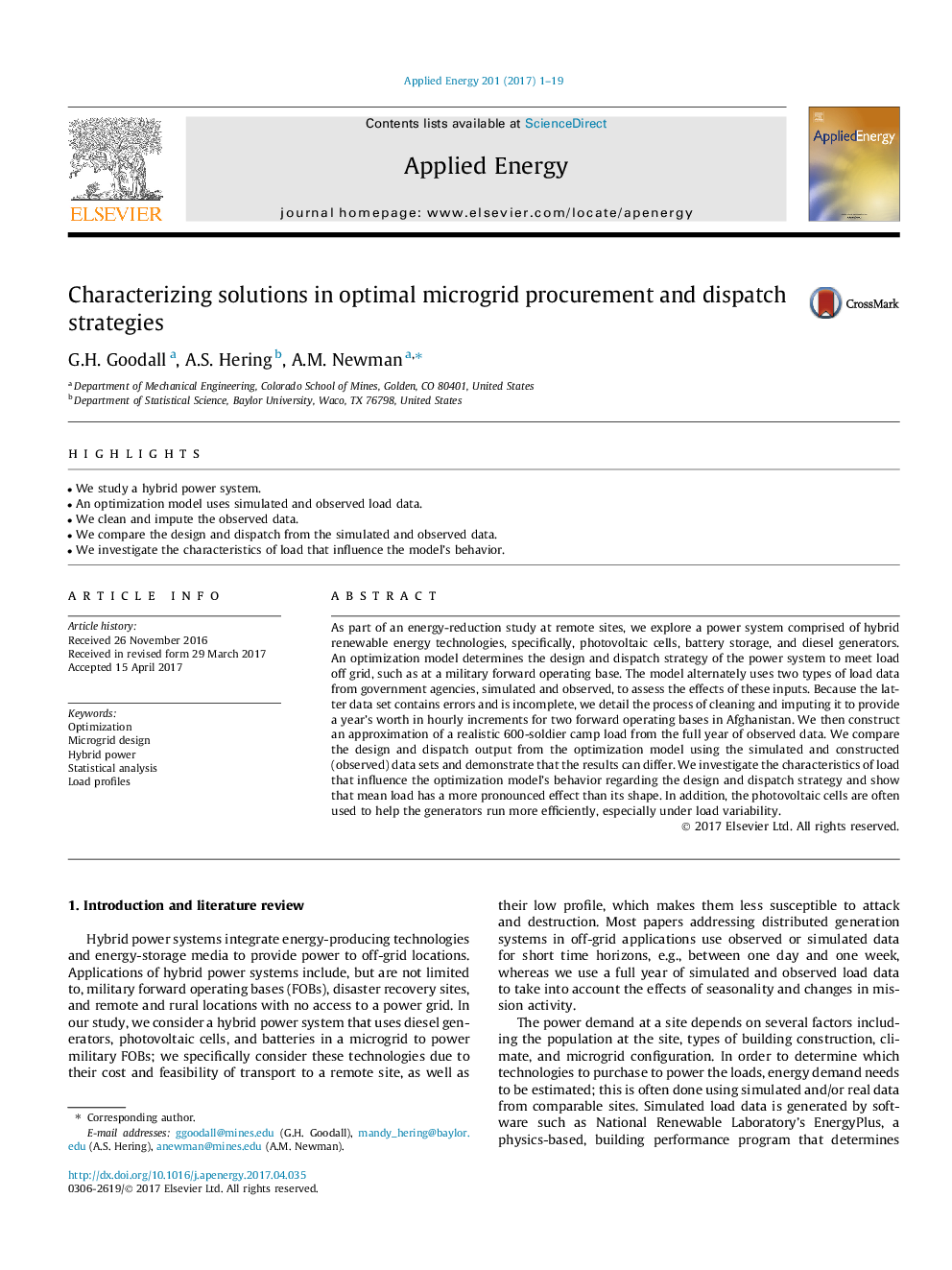| Article ID | Journal | Published Year | Pages | File Type |
|---|---|---|---|---|
| 4915998 | Applied Energy | 2017 | 19 Pages |
Abstract
As part of an energy-reduction study at remote sites, we explore a power system comprised of hybrid renewable energy technologies, specifically, photovoltaic cells, battery storage, and diesel generators. An optimization model determines the design and dispatch strategy of the power system to meet load off grid, such as at a military forward operating base. The model alternately uses two types of load data from government agencies, simulated and observed, to assess the effects of these inputs. Because the latter data set contains errors and is incomplete, we detail the process of cleaning and imputing it to provide a year's worth in hourly increments for two forward operating bases in Afghanistan. We then construct an approximation of a realistic 600-soldier camp load from the full year of observed data. We compare the design and dispatch output from the optimization model using the simulated and constructed (observed) data sets and demonstrate that the results can differ. We investigate the characteristics of load that influence the optimization model's behavior regarding the design and dispatch strategy and show that mean load has a more pronounced effect than its shape. In addition, the photovoltaic cells are often used to help the generators run more efficiently, especially under load variability.
Related Topics
Physical Sciences and Engineering
Energy
Energy Engineering and Power Technology
Authors
G.H. Goodall, A.S. Hering, A.M. Newman,
